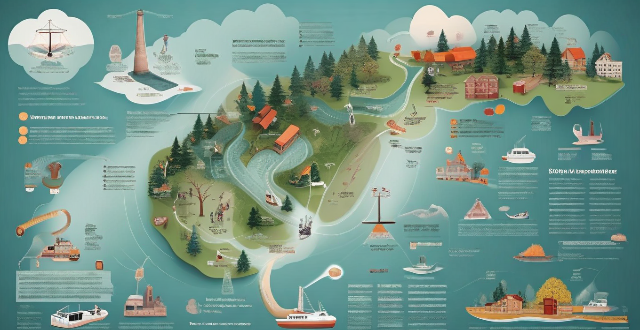Climate change, driven by human activities like burning fossil fuels and deforestation, is altering global weather patterns. These changes include increased frequency and intensity of extreme weather events such as heatwaves, heavy precipitation, droughts, and storms, as well as changes in seasonal weather patterns like early spring onset and altered monsoon patterns. Long-term changes in weather patterns include polar amplification, ocean circulation changes, and atmospheric circulation changes. These impacts pose significant challenges for adaptation and mitigation efforts aimed at reducing negative effects on ecosystems, societies, and economies worldwide.

Impacts of Climate Change on Global Weather Patterns
Climate change, driven primarily by human activities such as burning fossil fuels and deforestation, is altering global weather patterns in significant ways. These changes have far-reaching consequences for ecosystems, economies, and human health. Below are some of the key impacts of climate change on global weather patterns:
Increased Frequency and Intensity of Extreme Weather Events
Heatwaves
- Hotter Temperatures: Global temperatures are rising, leading to more frequent and intense heatwaves.
- Health Risks: Heatwaves can cause heat stress, heat stroke, and other heat-related illnesses.
Heavy Precipitation and Flooding
- Rainfall Patterns: Some regions are experiencing increased rainfall, leading to floods and landslides.
- Agricultural Impacts: Heavy precipitation can damage crops and disrupt food supply chains.
Droughts
- Reduced Rainfall: Other areas are becoming drier, leading to prolonged droughts.
- Water Scarcity: Droughts can lead to water shortages, affecting agriculture, drinking water supplies, and hydroelectric power generation.
Storms and Typhoons
- Strengthened Storms: Warmer ocean temperatures are fueling more powerful storms and typhoons.
- Coastal Erosion: These storms can cause coastal erosion, damage to infrastructure, and loss of life.
Changes in Seasonal Weather Patterns
Early Spring Onset
- Shifting Seasons: Climate change is causing earlier spring onset in many regions.
- Plant and Animal Impacts: This can affect plant blooming times and animal migration patterns.
Altered Monsoon Patterns
- Monsoon Variability: Monsoon patterns are becoming less predictable, with some regions experiencing heavier rainfall while others face drought conditions.
- Agricultural Consequences: Monsoon variability can have significant impacts on rain-fed agriculture.
Long-Term Changes in Weather Patterns
Polar Amplification
- Warming at the Poles: Both the Arctic and Antarctic are warming faster than the global average.
- Ice Melt and Sea Level Rise: This leads to melting ice caps and glaciers, contributing to sea level rise.
Ocean Circulation Changes
- Thermohaline Circulation: Changes in temperature and salinity are affecting ocean currents like the Gulf Stream.
- Climate System Impacts: Alterations in ocean circulation can have wide-ranging impacts on global climate systems.
Atmospheric Circulation Changes
- Jet Stream Variability: The jet stream, which influences weather patterns across continents, is becoming more erratic.
- Extreme Weather Spread: This can lead to the spread of extreme weather events from one region to another.
In conclusion, climate change is reshaping global weather patterns in complex and interconnected ways. These changes pose significant challenges for adaptation and mitigation efforts aimed at reducing the negative impacts on ecosystems, societies, and economies around the world.